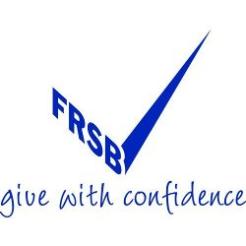Real progress is being made in self-regulation, but all fundraising charities should join the FRSB and make prominent use of the tick logo, says Jenna Pudelek.
It has been more than two years since Lord Hodgson’s review of the Charities Act 2006 set out the need to address the “confused landscape of self-regulation”. Since then, the Institute of Fundraising, the Public Fundraising Regulatory Association and the Fundraising Standards Board have put aside their differences and got together to agree how their roles should be clarified.
The FRSB should be the single public-facing regulatory body and point of contact for people with complaints about any kind of fundraising, the IoF should set the standards and write the rules and codes against which the FRSB should adjudicate, and the PFRA would continue to play a specialist role relating to face-to-face fundraising, they agreed.
When I first started writing about the sector, all three organisations were new to me and it was slightly confusing, at first, to unpick their different responsibilities and roles. There was a certain amount of crossover between who handled complaints about F2F and how the Fundraising Promise worked alongside the Code of Fundraising Practice. But it wasn’t rocket science once I started working with the various bodies, and really there’s no reason why members of the public should know about the IoF or the PFRA. To me, the main issue seems to be making sure people know the FRSB handles complaints about fundraising, so the challenge is communication rather than anything structural.
The PwC review of self-regulation came along at a time when significant progress had already been made towards addressing some of the concerns raised by Hodgson and MPs. The bodies now seem to be working towards meeting some of its more sensible recommendations, such as a shared strategy, closer working between their communications teams and having representatives on each other’s boards. But other recommendations, such as a shared information portal, seem to show a lack of understanding about the real issues involved in self-regulation. I haven’t seen the full report as it wasn’t made publicly available, and its author, PwC’s head of charities Ian Oakley Smith, refused to be interviewed about his findings. So maybe he does have some interesting perspectives to share, but is just keeping them to himself. Or maybe the whole thing was just a bit of a tick-box exercise.
Meanwhile, the FRSB has been working on making itself more visible and has upped the number of adjudications it has published this year. It has recommended the IoF reviews the Code in relation to vulnerable people and doorstep. Working more closely with the Charity Commission, a new partnership between the regulators is introducing more requirements for fundraising at railway stations. And that the Commission’s website will say whether charities are members of the FRSB should help towards raising awareness.
I’m not sure whether it’s because I know to look for it now, but it seems like the FRSB’s tick logo is becoming more visible on tube, train and DRTV ads, and some charity websites. Great Ormond Street Hospital Children’s Charity is one of the more recent sign-ups to the FRSB’s regime, joining in the wake of the allegations made by Dispatches about its telephone fundraising activities. All fundraising charities should join the FRSB and make prominent use of the tick logo. The sector has a responsibility to make self-regulation work, and helping to raise the profile of the FRSB is central to that.









